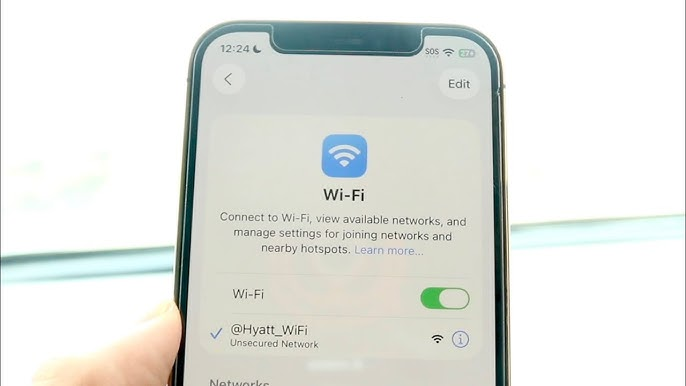加密领域的下一波颠覆性创新浪潮将来自哪里?
本文来自 Substack,原文作者:加密研究机构 Messari 前分析师 Mason Nystrom,由 Odaily 星球日报译者 Katie 辜编译。

“颠覆性创新”一词最初由 Clayton Christensen 在 20 世纪 90 年代提出,当新技术与创新商业模式相结合时,就会发生颠覆性创新——新市场进入者能够超越现有企业。加密技术和每一项新兴技术一样,充满了突破性的技术创新(包括密码学、数学、金融和计算机科学)。大量的技术创新通常意味着,加密技术中的颠覆性创新往往来自于实施新的加密经济模型或代币分发机制的协议和公司。
通过关注代币分发机制和加密经济模型创新(加密商业模式的两个组成部分)的新趋势,我们可以尝试回答这样一个问题:加密领域的下一波颠覆性创新将来自哪里?
代币分发机制和加密经济模型如何推动创新发展?
区块链网络为代币分发和加密经济模型提供了一张“白纸”。比特币的加密经济模型——工作量证明,催生了各种新的 PoW 货币,最著名的是 Zcash 和以太坊。虽然与比特币相比,以太坊提供了各种技术创新(即图灵完备性、智能合约等),但以太坊的第一个杀手级应用程序直到 2017 年才普及,当时首次代币发行(ICO)利用智能合约和 ERC-20 代币标准向参与者免信任分发代币。这种代币分发模式对 Web3 的发展至关重要,因此我们看到了核心概念的进一步迭代:初始交易所产品、初始 DEX 产品、流动性引导池(LBP)、自动化众筹平台(例如 JuiceboxDAO)等。
NFT 是另一项有趣的技术创新,但直到 SuperRare、Larva Labs 和 OpenSea 等 NFT 市场的部署,促进了链上版税的转让,NFT 才真正爆发。
与技术创新相比,商业模式创新的力量的另一个优秀例子是 ZK 技术。以太坊的规模竞赛已经推动了数十亿美元的零知识研究,促进了 ZK 技术的发展。截至目前,ZK rollup(如 Aztec、Scroll、Zksync 和 Hemez)已经成为各种突破的驱动力。现在,以太坊可扩展性解决方案的下一波浪潮将由加密经济模型中的设计创新驱动,这些设计创新将激励 ZK 排序(ZK sequencing)、证明、认证和网络价值捕获。
下一波加密货币经济模型
每一波加密货币浪潮都由新的代币分发机制和加密经济模型主导,接下来让我们来研究三种新的新兴模型:合约安全收入费用分配模型(Contract Secured Revenue/CSR)、Nounish DAO 和 MEV 订单流(MEV Orderflow)。
1 月 22 日,Canto 宣布了 Contract Secured Revenue(CSR),推动 Canto 本轮大涨。
CSR 是 Canto 网络的一种费用分摊模式,它使合约开发者可在用户与合约交互时支付给网络的交易费用中抽取一定比例,以此来赚取收入。

合约安全收入费用分配模式(CSR)
合约安全收入费用分配模式是指使用智能合约产生的部分费用归于 NFT 或地址(如开发者)。在以太坊上,与智能合约交互的费用会被烧毁,产生使用量的协议不会因为创造价值而获得任何奖励,除了来自任何特定于应用程序的交易的收入(例如 NFT 市场费用)。像 Canto 这样的 L1 将 CSR 作为核心要素,以协调开发者和经济活动。重要的是,CSR NFT 可以从多个智能合约中抽取一定的费用(例如协议不同版本的智能合约)。
Cosmos 上的另一个 L1——Archway,也同样奖励网络上的应用程序。Archway 提供了三种可配置的奖励分配机制:Gas 回扣(50% 的奖励给开发者)、通胀奖励(25% 的奖励给应用开发者)和智能合约溢价(例如自定义费用)。
这种基于效用奖励开发人员或协议的模式提供了一种独特的方法,不一定需要治理代币作为收入索赔或要求协议在网络的 Gas 成本之上收取额外费用。此外,CSR 作为一种经济的商业模式,有可能降低中间商的接受率,并进一步协调建立在L1/L2之上的协议或在现有协议之上产生大量需求的应用程序。
更有趣的是,这种模型可以适用于任何类型的应用程序,其中一部分需求或基于使用的收入应该归于利益相关者,如创造者、开发者和用户等。想象一下,如果 TikTok 的创作者基金(这是创作者赚钱的重要组成部分)套用了 CSR 模型,根据在平台上的观看次数或观看时间,将一部分通胀奖励或广告收入直接分配给内容创作者。CSR 提供了一种商业模型,可以进一步协调基于协议构建的应用程序。
Nounish DAO 发行方式
Nounish DAO 拍卖模式——由 Nouns DAO 开创的一种 NFT 发行方式,原方式是需要每天无限期地生成和拍卖一个新的 NFT。然而,最近我们看到一波 NFT 项目采用 Nounish 发行方式,每天发布多个 NFT,无截止日期。这样的项目属于 Nounish DAO 类型。

随着 NFT 版税面临着不确定的未来,两个重要问题迫在眉睫: NFT 的稳定收入将来自何处,以及最佳的 NFT 商业模式是什么。Nounish DAO 是利用 Nouns 拍卖模式持续销售 NFT 的项目,为社区中的小社区提供了一个模式,这些社区由一个共同的目标团结在一起,或者可以围绕资本构成和分配进行协调。Nouns 生成器允许任何人在几分钟内创建一个 Nounish DAO,并且自推出以来已经支持了几十个新的 Nounish DAO 的创建。
也许最值得注意的是,通过 Nouns 生成器构建的许多早期 Nounish DAO 并不专注于创造更多 Nouns meme,而是通过创新另寻出路,如以下三个例子:
ArtHaus——一个专注于与艺术家合作的 Nounish DAO,将从 ArtHaus DAO 推出;
Spores——一个专注于为链上音乐创建下一代混音设备的 Nounish DAO;
BLVKHVND——第一个获得职业世界冠军的 DAO 现在已经转变为 Nounish 模式。
Nouns 机制并不适用于所有类型的组织。Jacob Horne 是 NFT 交易市场 Zora 和 Nouns 生成器的联合创始人,他假设 Nouns 模型在应用于一般目的时比应用于特定应用时效率最高。这个假设的一个核心组成部分是,当 Nounish DAO 能够为实现广泛目标的竞争方法提供资金时,它是最有效的,而应用于具体目标的特定方式时,通常起不到太大的作用。

以以下广泛目标和具体目标的例子为例:
增加 Nouns meme VS. 制作 Nouns 电影
创建可再生基础设施 VS. 建造太阳能农场
碳消费 VS.购买碳信用
Nounish DAO 有一些现有的类型用例:
品牌、Meme 和 IP
会员制度
专款或投资
创建 SoV(有储存价值)资产(如艺术品)
随着 Nounish DAO 模型模块化,它已经开始提供非 CC0 IP(针对其他品牌和 IP)、最低 NFT 购买量(针对更大规模的资金需求)、Splits(例如在其他 DAO 之间共享资金)等功能。这些补充和更广泛的试验将扩大利用 Nounish 模式的社区和 DAO 的类别。
MEV 订单流/PFTF(交易流支付)
随着 MEV 被拆分为多个利益相关者(即搜索者、区块构建者和提议者),控制用户(因此也包括交易流)的应用程序将能够捆绑用户交易,并将它们以私有 Meme pool(内存池)的形式出售给搜索者和区块构建者。
与 Robinhood 如何率先向基金和机构提供交易流支付(PFOF)类似,应用程序(如钱包和 DEX)将能够采用交易流支付流程(PFTF)来构建区块。随着 MEV 类别的持续增长,以及多链 MEV 的机会扩大,Rollup、应用链和超级 Dapp 将把 MEV 视为新的收入来源。另一个潜在的最终状态是,这些 PFTF 盈利应用程序将重新分配他们的 MEV 订单流收入,部分以 Gas 补贴或其他折扣的形式返还给用户。
MEV 将成为加密货币不可分割的一部分。随着应用程序和协议在做出产品决策时将 MEV 纳入考虑范围,我们可能会发现 MEV 作为保底收入流和新兴商业模式的核心组成部分变得越来越重要。
迈向更好的 Web3 商业模式
事实上,Web3还没有将其划时代的商业模式标准化。当今最成功的应用程序都依赖于 Web2 的基于交易的模型——DEX、市场等。这些模型很可能会继续流行并盈利,但编程和将价值代币化的能力也带来了新的商业模式的潜力。新的代币分发机制和加密经济模型将成为下一波实验和颠覆性创新新的关键催化剂。



